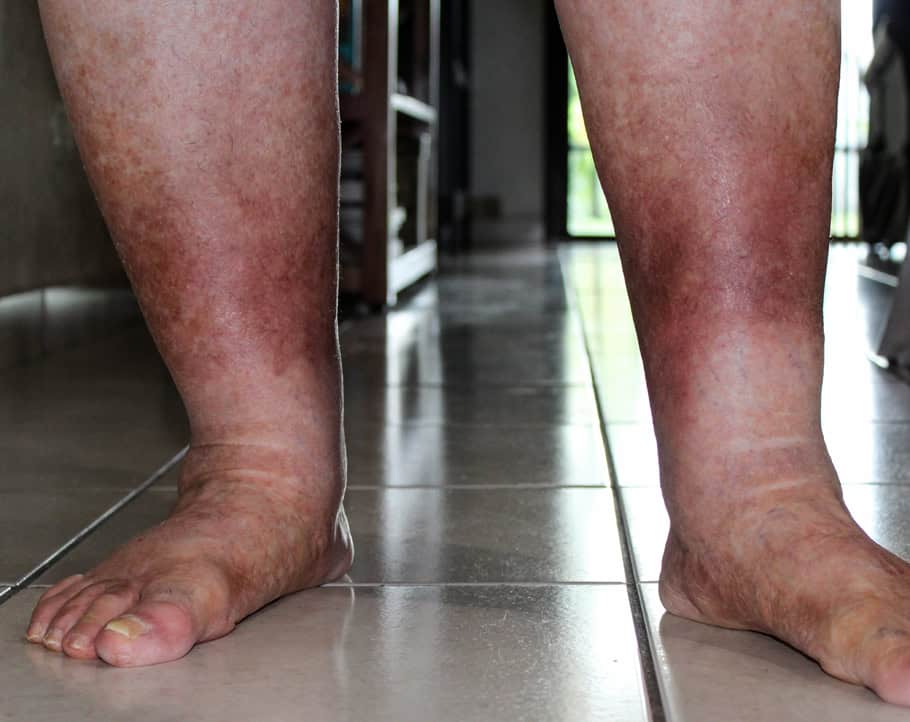Vein Condition
Chronic Venous Insufficiency
What is Chronic Venous Insufficiency (CVI)?
Chronic venous insufficiency (CVI) occurs when the tiny valves in the veins of the leg don’t work properly. Normally, these valves prevent blood that’s on its way to the heart from flowing back down the leg. When a valve is faulty, blood can pool in the vein and cause problems.
CVI in the main or axial veins in the legs is the most common cause of varicose veins. While CVI isn’t life-threatening, it can worsen quickly. If left untreated, the pain and swelling can become debilitating. CVI can also lead to open sores called ulcers.
If you have symptoms of CVI, book a vein consultation today. Early treatment can prevent the condition from progressing.
FAQs
CVI can cause changes in how the legs look and feel. Symptoms include:
- Varicose veins
- Swelling of the ankles and lower legs, particularly after standing for a long time
- Pain when walking
- Tired, achy legs
- Leg cramps and muscle spasms
- A tight feeling in the calves
- An urge to move the legs
- Leathery skin
- Flaky or itchy skin on the legs or feet
- Reddish patches on the lower legs that may progress to brown skin in severe cases
- Leg ulcers
Various factors may increase the risk of CVI, including:
- A family history of CVI
- Being overweight or obese
- Pregnancy
- Smoking
- Phlebitis (swelling and inflammation of a vein close to the skin)
- Damage to the leg from an injury or surgery
- Lack of exercise
- Tumors in the pelvis
CVI is more common in women, especially those who have had multiple pregnancies, and in people who are middle-aged or older. It can also develop after deep vein thrombosis, a blood clot in a deep vein of the leg.
Treatments for Chronic Venous Insufficiency
If your vein specialist suspects CVI, he or she may use ultrasound imaging to determine if one or more valves is defective.
Compression Therapy
Snug-fitting socks or stockings may be prescribed to increase circulation in the legs. For some patients, it may be all that’s needed.
Other patients will need treatment to close the affected veins so the body can reroute the blood through healthier veins. Today’s minimally invasive techniques leave virtually no scars and get you back on your feet quickly. It can take weeks or months for the full benefits of these procedures to take effect, but you may notice a difference sooner.
Endovenous Laser Treatment
Endovenous laser treatment (EVLT) uses laser energy to close faulty veins. A catheter (thin tube) is inserted into the vein, then a laser fiber is passed through it. The laser creates heat that causes the vein to collapse.
Radiofrequency Ablation
Like ELVT, radiofrequency ablation (RFA) uses heat to close faulty veins, but the heat is created by radio waves instead of a laser. Compared with EVLT, radiofrequency ablation often results in less post-surgery pain and bruising. AQUA Vein Center physicians use a radiofrequency ablation procedure called Venefit.
VenaSeal
The VenaSeal procedure seals the vein with a glue-like adhesive. Using ultrasound guidance, the physician inserts the device’s catheter into the vein and delivers small amounts of the adhesive. The procedure results in very little pain or bruising, and patients can return to normal activity immediately afterward.
The adhesive remains in the body permanently. In rare cases, a patient has a bad reaction to it and it must be surgically removed.
Sclerotherapy & Ultrasound-Guided Foam Sclerotherapy (UGS)
In sclerotherapy, faulty veins are closed by injecting an irritant solution (called a sclerosant) into the vein. Varithena is a brand of sclerosant foam. The physician may recommend sclerotherapy if you have varicose veins or spider veins in addition to CVI.
A vein specialist may first perform an ultrasound to locate the affected veins. Another option is to use a vein-finding device called Veinlite. The device emits light that is absorbed by blood in the veins, making the veins easier to see and allowing for more precise injections.
In some cases, the physician may use a special catheter called ClariVein to inject the irritant solution. ClariVein has a rotating wire tip that disperses the solution inside the vein.
Don’t Ignore the Symptoms of CVI
Do you have red or brown patches or visible veins on your legs? Don’t dismiss them as an age-related, cosmetic concern. They may be a symptom of chronic venous insufficiency.
